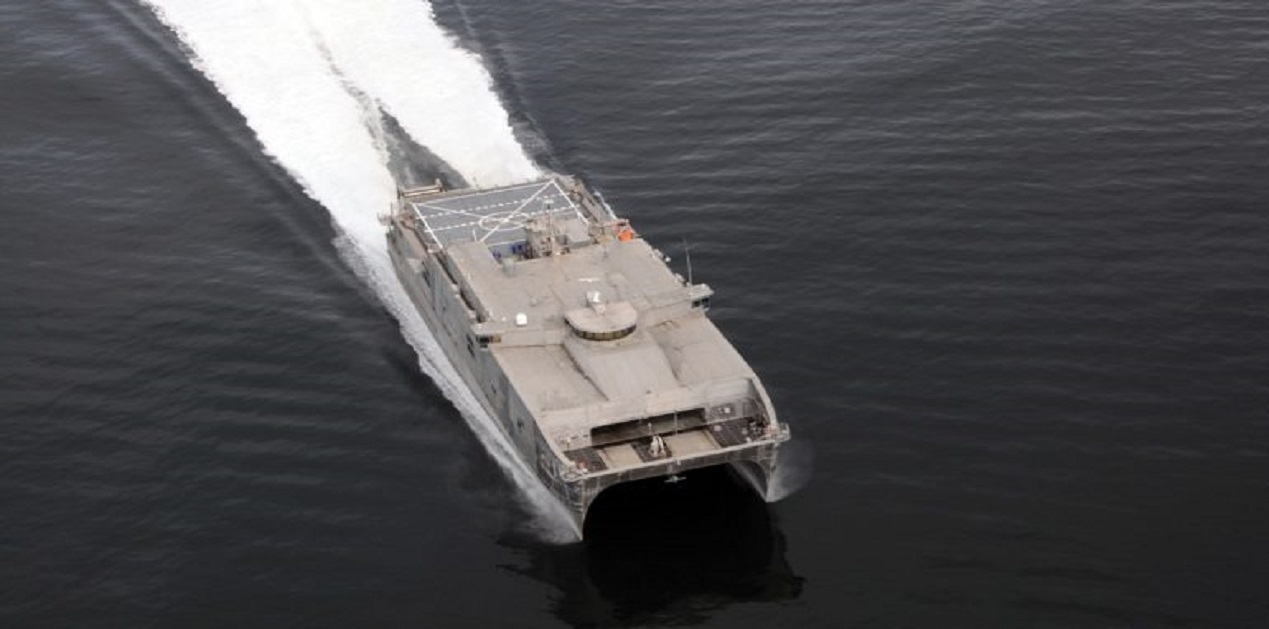Technological disruptions led by Fourth Industrial Revolution (4IR) technologies are now a common feature among the advanced navies. Smart, intelligent, predictive and cognitive technologies are being added to the menu of naval warfare. The military/naval manufacturing yards, units, laboratories and research institutions are focused on 4IR-enabled weapons and sensors, and technology developers are investing in autonomous platforms, robots, wearable including person-embedded sensors and human mounted computers, etc.
Manned and unmanned aviation platforms such as aircraft, helicopters and UAVs, have been part of the inventory of several navies. These are inherently agile and are embarked onboard ships and networked with other geographically dispersed platforms at sea and ashore thus facilitating sustained maritime domain awareness.
Current naval trends indicate a move towards reconfiguring surface warships as ‘Drone Mothership’ that can launch and recover unmanned maritime and air platforms. At the heart of ‘Drone Mothership’ is the idea of ‘coordinated and controlled autonomy’ under which Motherships will operate ahead of the fleet or deployed at strategic locations and act as the proverbial ‘naval scouts’ to forewarn the presence of the enemy or a threat. They could also function as the Command and Control Centre for drones operating in the area. However, in the case of armed drones, human intervention will be inbuilt i.e. humans will decide and control the use of lethal force.
Drone Mothership trends in Western Navies
At least four navies in the west (US, Russia, Belgium and Dutch) are planning to build/repurpose Drone Motherships to act as force multipliers. The US Navy’s Unmanned Maritime Autonomy Architecture concept involves “integrating autonomy and payloads”1 and it is testing the Spearhead (T-EPF 1) to serve as a mothership for unmanned aerial vehicle (UAV) and unmanned underwater vehicle (UUV).2 A ship of the Russian Federation Navy’s (RFN) Project 22350 Admiral Gorshkov-class frigates is being repurposed to serve as the Drone Mothership for Mine Warfare. The Belgian Naval & Robotics (formed by Naval Group & ECA Group) is building 12 MCM vessels and associated equipment for the Belgian and Dutch Navies. These can carry a variety of payloads (AUVs and scanners) and conduct operations as far as 12 nautical miles from the mothership. 3
Drone Mothership Trends in Asia
Similarly, four navies in Asia (China, Japan, Republic of Korea and Singapore) are experimenting with ‘Drone Mothership’ concept. Singapore’s ST Engineering has chosen the Vanguard 130 Multi-Role Combatant and its modular design helps it to reconfigure and serve as a “mothership to deploy and recover a wide array of unmanned systems such as UAV, USV and UUV.” 4
Japan's Mitsubishi Heavy Industries (MHI) is building the 30FFM next generation multi-mission frigate5 which has a unique circular 360° giant screen combat information center (CIC). It uses augmented reality (AR) technology for ‘displaying key information, such as target tracks and potential hazards, over external views’ and the AR can also help launch and recovery of unmanned surface vehicles.
Similarly, the Hyundai Heavy Industries of Republic of Korea has showcased its HCX-19 concept ship. It offers a glimpse of what “surface combatants will look like in the 2030s”.6 This Drone Mothership should be able to “deploy unmanned systems in all domains: Air (UAV), Surface (USV), Sub-surface (UUV) and remotely operated vehicles (ROVs).”
Chinese plans for a Drone Mothership is represented by the D3000 stealthy robotic trimaran warship.7 This 98-foot-long vessel operates in autonomous mode and can act as a mother vessel for other underwater unmanned vehicles. China has also developed and tested an unmanned 42-foot trimaran High Speed Intercept Boat fitted with machine guns and anti-tank guided missiles with a potential to operate in swarms. Apparently, the PLA Navy conducted an exercise in the South China Sea using these unmanned assault boats targeted at Taiwan.8 China also operates numerous marine scientific research and survey ships and these operate a variety of underwater drones.
Issues of Costs and Combat Effectiveness
Departments of Defence of major militaries across the globe are encouraging development of 4IR enabled military hardware. They are allocating reasonably good percentage of military budgets for the development of 4IR-enabled weapons and sensors to enable their militaries maintain edge over their respective adversaries. Besides combat edge, there is strong evidence of cost cutting advantage. According to a study, the US’ MUNIN (Maritime Unmanned Navigation through Intelligence in Networks) has “predicted a saving of over $7 million over a 25-year period per autonomous vessel in fuel consumption and crew supplies and salaries”.9
A recent study by the US Center for Strategic and Budgetary Assessments has observed that the future surface fleets will “increasingly rely on unmanned systems to perform sensing operations because unmanned systems can achieve the proximity or distribution to use passive sensors effectively or employ active sensors at acceptable risk,”10 Furthermore, “Engagements will largely continue to be ordered by a human operator, although that operator may be on a nearby manned platform and the weapon launched by an unmanned vehicle. Unmanned systems would conduct almost all counter-[surveillance and targeting] missions; they can make risk-worthy decoys or employ active countermeasures without exposing a manned platform to detection and attack.”
Need for Disruption
The Indian Navy has an ambitious force development plan to include 200 ships and 500 aircraft by 2050 to include nuclear propelled submarines and a three-carrier navy. However, the allocations for the navy in the overall defence budget of the country have been quite low and declining. It dropped to an abysmally low figure of 13 percent for FY 2020-2021.
General Bipin Rawat, the newly appointed Chief of the Defence Staff (CDS) has suggested critical review and prioritization of future military procurements. Indian Navy’s aircraft carrier plans have come under scrutiny; the CDS has expressed reservations and observed that it is a ‘very expensive’ platform and may have to be put into the back burner noting that a third aircraft carrier would depend on “how the economy progresses.”
Meanwhile, Defence Minister Rajnath Singh and General Bipin Rawat, the CDS have reiterated Prime Minister’s call for ‘Make India’ and ‘Atma Nirbhar’ (self-reliant) and called on the Indian armed forces to internalize the twin-mantras in defence technology and products. The Finance Minister too has echoed the above guidance, and announced policy reforms in the defence sector by raising of the Foreign Direct Investment (FDI) cap through the automatic route from 49 per cent to 74 per cent.11 The Ministry of Defence has also announced INR 400 crore for Defence Testing Infrastructure Scheme (DTIS) under which six to eight testing facilities for domestic defence and aerospace equipment will be set up.12
Under the current stressed economic circumstances, and the past trends, it is fair to assume that the Indian Navy may not receive sufficient fiscal support to meet its ambitious force structure plans. It would therefore be pragmatic to have a deeper look into the likely nature of future 4IR-enabled naval warfare and determine the kind of force structure that would be optimal for its missions. Similarly, it should also explore to repurpose an existing platform to serve as a Drone Mothership and operate UAVs and UUVs which could be a model for a future dedicated Drone Mothership.
Endnotes
- “Navy plans large new fleet of 'mothership'-controlled drone boats”, https://www.foxnews.com/tech/navy-plans-large-new-fleet-of-mothership-controlled-drone-boats(accessed 22 May 2020).
- “U.S. Navy Testing EPF as Drone Mother Ship”, https://www.navalnews.com/naval-news/2019/07/u-s-navy-testing-epf-as-drone-mother-ship/ (accessed 22 May 2020).
- “This is what the Future Belgian & Dutch MCM Motherships will look like” https://www.navalnews.com/naval-news/2019/05/this-is-what-the-future-belgian-dutch-mcm-motherships-will-look-like/ (accessed 22 May 2020).
- “IMDEX 2019: ST Engineering Unveils Vanguard 130 Multi-Role Combatant” https://www.navalnews.com/event-news/imdex-asia-2019/2019/05/imdex-2019-st-engineering-unveils-vanguard-130-multi-role-combatant/ (accessed 22 May 2020).
- “JMSDF Future Frigate to Feature Futuristic 360° Augmented Reality Wall”, https://www.navalnews.com/event-news/sas-2019/2019/05/jmsdf-future-frigate-to-feature-futuristic-360-augmented-reality-wall/ (accessed 22 May 2020).
- “MADEX 2019: HHI Unveils HCX-19 Concept Ship”, https://defence.pk/pdf/threads/madex-2019-hhi-unveils-hcx-19-concept-ship.640467/ (accessed 22 May 2020).
- Brian Wang, “China touts vaporware robotic military ship”, https://www.nextbigfuture.com/2017/09/china-touts-vaporware-robotic-military-ship.html (accessed on 28 February 2020).
- “Miniaturized Assault Boats will Attack as Swarm”, https://i-hls.com/archives/83683 (accessed on 28 February 2020).
- “Autonomous ships”,https://www.standard-club.com/media/2767846/autonomous-ships.pdf (accessed 05 October 2019).Bernard Marr, “The Incredible Autonomous Ships of The Future: Rather Than”, https://www.forbes.com/sites/bernardmarr/2019/06/05/the-incredible-autonomous-ships-of-the-future-run-by-artificial-intelligence-rather-than-a-crew/#6b4b318e6fbf (accessed 05 October 2019).
- “The surface Navy needs to fundamentally reshape itself to defeat the Chinese threat, study finds”, https://www.defensenews.com/digital-show-dailies/surface-navy-association/2020/01/08/the-surface-navy-needs-to-fundamentally-reshape-itself-to-defeat-the-chinese-threat-study-finds/ (accessed 20 May 2020).
- “Finance Minister announces new horizons of growth; structural reforms across Eight Sectors paving way for Aatma Nirbhar Bharat” https://www.pib.gov.in/PressReleasePage.aspx?PRID=1624536 (accessed 22 May 2020).
- “Raksha Mantri Shri Rajnath Singh approves Rs 400 crore Defence Testing Infrastructure Scheme”, https://www.pib.gov.in/PressReleasePage.aspx?PRID=1624118(accessed 22 May 2020).
(The paper is the author’s individual scholastic articulation. The author certifies that the article/paper is original in content, unpublished and it has not been submitted for publication/web upload elsewhere, and that the facts and figures quoted are duly referenced, as needed, and are believed to be correct). (The paper does not necessarily represent the organisational stance... More >>
Image Source: https://www.navalnews.com/naval-news/2019/07/u-s-navy-testing-epf-as-drone-mother-ship/











Post new comment